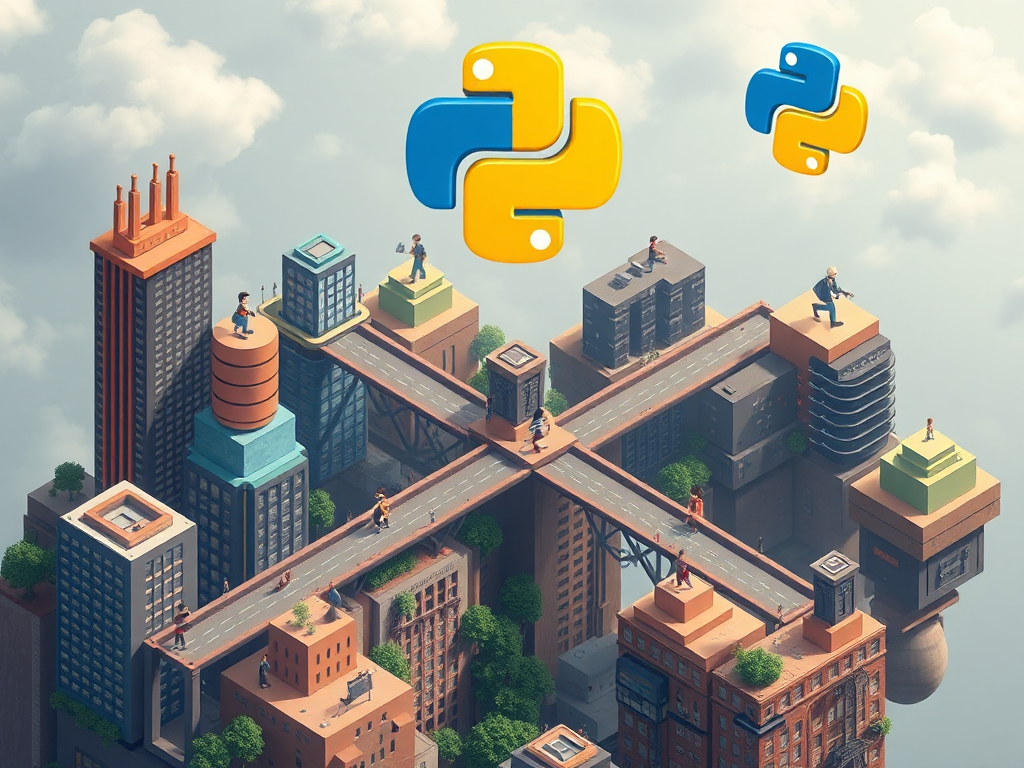Introduction to Version Control
Have you ever encountered this situation: You wrote a piece of code that was working fine, but after some modifications, it suddenly stopped working, and you couldn't remember how it was written before? Or during team development, code was accidentally overwritten by colleagues, resulting in lost work? These are problems that a version control system can help us solve.
As a Python developer, I believe that mastering version control is not only an essential skill but also a key tool for improving development efficiency. Let's explore together how to apply version control systems in Python projects.
Basic Concepts
Before we begin, we need to understand several core concepts. Imagine you're writing a novel and want to save a copy after completing each chapter in case you need to make changes later. A version control system is like an intelligent file management assistant that not only helps you save each version but also records who made what changes and when.
A Repository is like a huge time vault that stores all the historical records of your project from its inception to the present. When you make changes to your code and confirm to save them, you create a Commit. Each commit is like a point in time in the project's history river, and you can return to that point at any time to view the code state then.
Workflow
Let me give you a practical example. Suppose you're developing a data analysis tool, the main functionality is complete, and now you want to add a new visualization module. You can create a new Branch to develop the new feature without affecting the stable code on the main branch.
class DataAnalyzer:
def __init__(self, data):
self.data = data
def analyze(self):
# Basic analysis functionality
return stats
class DataAnalyzer:
def __init__(self, data):
self.data = data
def analyze(self):
# Basic analysis functionality
return stats
def visualize(self):
# New visualization functionality
plt.plot(self.data)
plt.show()
Practical Tips
In my development experience, I've found that proper use of the .gitignore file is extremely important. Python projects often generate files that don't need to be version controlled, such as pycache directories, virtual environment folders, temporary files, etc. A good .gitignore configuration can prevent these files from polluting your code repository.
__pycache__/
*.py[cod]
*$py.class
.env
venv/
.venv/
ENV/
env.bak/
venv.bak/
.idea/
.vscode/
Team Collaboration
In team development, I've found that establishing a clear branch management strategy is crucial. Our team uses this branch strategy:
- master/main branch: only stores stable production environment code
- develop branch: integration branch for daily development
- feature branch: branch for developing new features
- hotfix branch: branch for urgent production environment bug fixes
This strategy helps us effectively manage code and reduce code conflicts. For example, once our team was developing multiple features simultaneously, we used different feature branches to develop independently and then merged them into the develop branch for integration testing, avoiding interference with each other.
Advanced Applications
As the project scale grew, we gradually introduced some advanced version control practices. For example, using Git Hook to automatically run tests before committing code:
def run_tests():
import pytest
result = pytest.main(['tests/'])
if result != 0:
print("Tests failed, commit rejected")
sys.exit(1)
if __name__ == "__main__":
run_tests()
Common Issues
When guiding newcomers in using version control, I've found that their most common challenge is handling code conflicts. Actually, resolving conflicts isn't difficult; the key is understanding why they occur.
When two developers modify the same part of the same file simultaneously, Git can't automatically decide which version to keep, and manual conflict resolution is needed. I suggest communicating with relevant colleagues to understand the intention behind each modification before deciding how to handle it.
Efficiency Improvements
Through proper use of version control, our team's development efficiency increased by at least 30%. This is reflected not only in code management but more so in the smoothness of team collaboration. Previously, we might have needed to exchange code via email or instant messaging tools; now we just submit merge requests on the Git platform, and colleagues can easily review code and provide suggestions.
Future Outlook
With the development of artificial intelligence and machine learning, version control systems are constantly evolving. For example, there are now intelligent conflict resolution assistants that can automatically propose conflict resolution solutions based on historical commit records. I believe version control systems will become smarter and more user-friendly in the future.
Experience Summary
Through years of Python development experience, I've summarized several recommendations about version control:
- Commits should be small and frequent, with each commit focused on one change
- Commit messages should be clear and specific, explaining the reason for and impact of changes
- Regularly sync with remote repository to avoid accumulating too many changes
- Establish code review mechanisms to improve code quality
- Make good use of branch functionality to protect main branch code stability
Do you find these suggestions helpful? Feel free to share your thoughts and experiences in the comments section.




 Previous
Previous 




